The Night Sky March 2012
Compiled by Ian Morison
A Great Month for Planets
This page, updated monthly, will let you know some of the things that you can look out for in the night sky. It lists the phases of the Moon, where you will see the naked-eye planets and describes some of the prominent constellations in the night sky during the month.Image of the Month
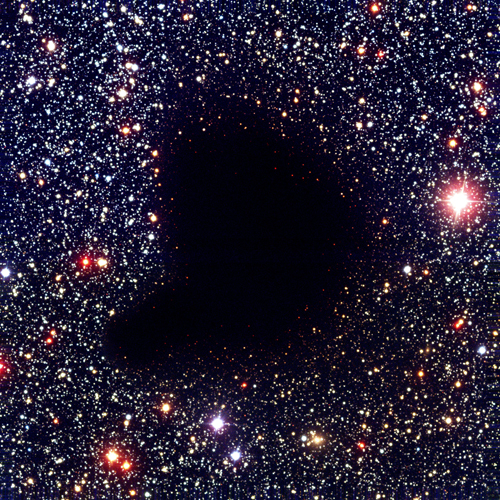 Molecular Cloud Barnard 68
Molecular Cloud Barnard 68FORS Team, 8.2-metre VLT Antu, ESO
This image shows - in silhouette - the molecular cloud Barnard 68 that lies about 500 light years away in the constellation Ophiuchus. It is ~1 light year across and has a high concentration of dust and gas absorbing virtually all of the light from more distant stars. It is in these dark clouds that new stars form to give open star clusters like the Pleiades.
Highlights of the Month
March 1-8th: Mars at Opposition
Mars reaches opposition on March 3rd and will be closest to the Earth on the 5th, so the first week of March is a great time to observe the red (actually salmon-pink) planet! (But it is great the whole month so do not despair if we have a cloudy week!) Oppositions of Mars occur every 2 years and 2 months but how close Mars will be and hence its angular size varies by a factor of nearly 2! This is the result of the elliptical orbits of both Mars and, to a lesser extent, the Earth. To get the minimum possible separation, Mars must be closest to the Sun and the Earth at its greatest distance from the Sun at the time of opposition. This occured on the 27th August 2003 when it was just 56 milion km away and had an angular size of 25.1 arc seconds. This was the closest approach since 57,617 BC and there will not be such a close approach again for another 284 years. Following a close approach, the distance at successive oppositions first increases and then reduces again. Sadly, this year Mars will be at its furthest with a maximum angular size of just 13.89 arc seconds - virtually the minimum possible. At the oppositions that follow in 2014, 2016 and 2018, the angular size will increase to 15.16, 18.60 and 24.31. 2018 will thus be a great year to observe it!Its maximum elevation from the UK,when due south, is only ~46 degrees but it will still be worth observing with a telescope: the north polar cap is tilted towards us so should be easily visible and, as shown in the simulated image, the most prominent marking on Mars, Syrtis Major will become visible around midnight. Let's hope for some clear nights with good seeing!
March 4th - after sunset: Jupiter, Venus and Mercury - and a chance to spot Uranus.
On the 4th March, the planets Jupiter, Venus and Mercury may be seen after sunset. If you can find Mercury with binoculars, place Mercury to the right of the field of view, and you should also be able to observe the planet Uranus just over 2 degrees away shining at magnitude +5.9.March 24th Saturn and its moons
After midnight at the end of the month, Saturn may be observed towards the south. On the night of the 24th there is a nice grouping of its moons. A small telescope will easily show Titan, and one of 8 inches diameter several of the fainter moons as well. I chose this date to highlight Saturn as the Moon is just after new and its light will not hinder our view.March 25th: Jupiter, Venus and a thin crescent Moon.
After sunset on the 25th, you may, given a low south western horizon and clear skies, be able to spot Jupiter, at magnitude -1.9 just to the left of a thin crescent Moon. Look out for the "earthshine" illuminating the "dark side" of the Moon - often called the "old Moon in the new Moon's arms". Venus, at magnitude -4.24, will also be in view above Jupiter..March 2nd and 14th: The Straight Wall
The Straight WallThe Straight Wall is best observed either 1 or 2 days after First Quarter (2nd March) or a day or so before Third Quarter (14th March). To be honest, it is not really a wall but a gentle scarp - as Sir Patrick has said "Neither is it a wall nor is it straight!".
M27 imaged with the Faulkes Telescope
The Dumbell Nebula, M27, imaged by Daniel Duggan.This image was taken using the Faulkes Telescope North by Daniel Duggan - for some time a member of the Faulkes telescope team. It is a planetary nebula lying in the constellation Vulpecula at a distance of about 1,360 light years. Our eyes essentially see in monochrome at night as there is not enough light to stimulate the cones that detect color. But, given a sufficiently large telescope, the central part of the nebula looks a bright irredescent green - as I have seen using a 16 inch Meade Telescope in the Isle of Man.
Learn more about the Faulkes Telescopes and how schools can use them: Faulkes Telescope"
Observe the International Space Station

The International Space Station and Jules Verne passing behind the Lovell Telescope on April 1st 2008.
Image by Andrew Greenwood
Note: I observed the ISS three times recently and was amazed as to how bright it has become.
Find details of sighting possibilities from your location from: Location Index
See where the space station is now: Current Position
The Moon

The Moon at 3rd Quarter. Image, by Ian Morison, taken with a 150mm Maksutov-Newtonian and Canon G7.
Just below the crator Plato seen near the top of the image is the mountain "Mons Piton". It casts a long shadow across the maria from which one can calculate its height - about 6800ft or 2250m.
| new moon | first quarter | full moon | last quarter |
|---|---|---|---|
| Feb 21st | N/A | Feb 7th | Feb 14th |
A World Record Lunar Image
To mark International Year of Astronomy, a team of British astronomers have made the largest lunar image in history and gained a place in the Guinness Book of Records! The whole image comprises 87.4 megapixels with a Moon diameter of 9550 pixels. This allows details as small as 1km across to be discerned! The superb quality of the image is shown by the detail below of Plato and the Alpine Valley. Craterlets are seen on the floor of Plato and the rille along the centre of the Alpine valley is clearly visible. The image quality is staggering! The team of Damian Peach, Pete lawrence, Dave Tyler, Bruce Kingsley, Nick Smith, Nick Howes, Trevor Little, David Mason, Mark and Lee Irvine with technical support from Ninian Boyle captured the video sequences from which 288 individual mozaic panes were produced. These were then stitched together to form the lunar image.Please follow the link to the Lunar World Record website and it would be really great if you could donate to Sir Patrick Moore's chosen charity to either download a full resolution image or purchase a print.
The Planets
The first half of March gives us one of the best times for viewing the planets with the unaided eye for many years. , After sunset Jupiter and Venus are seen in the west whilst Mercury may be seen below. Later, Mars reashes opposition on March 3rd so will be seen south around midnight and Saturn rises later in the evening!
Jupiter
Jupiter is still seen well up in the western sky after sunset as March begins. On Febuary 1st it will the lie some ~45 degrees above the south-western horizon shining at magnitude -2.2 in Aries. With an angular size of ~36 arc seconds falling to 34 during the month, a small telescope will easily show the equatorial belts (the south equatorial belt has reappeared) and the four Galilean moons. Observing it in the last few weeks has shown some prominent dark regions in the north equatorial belt. These are called "barges". I do hope that you will have taken my advice and bought a small telescope to observe it!See highlight above.
Saturn
Saturn rises about 4 hours after sunset at the beginning of the month, and can be seen due south at an elevation of 31 degrees at around 3:30 am. By the end of March, it rises just one hour after sunset and will lie in the south at around 1:30 am (GMT/UT)). It lies in Virgo, shining at magnitude +0.4 (increasing to +0.3 during the month) some 7 degrees (dropping to 6 due to its retrograde motion in March) slightly up and to the left of the first magnitude star Spica. Sadly, in contrast to Jupiter, Saturn is heading to the more southerly parts of the ecliptic so, for quite some considerable time, will not be seen high above the horizon. However, nicely, the rings are opening out and are now ~15 degrees to the line of sight, so will appear appreciably wider than we have seen during its last apparition. It is now well be worth having a look at its ~18.4 (increasing to 19) arc second disk and ring system. With a small telescope on a night of good seeing, you should now be able to easily spot Cassini's Division within the ring system, and given a scope with an aperture of 6 inches or greater and a night of excellent seeing one might even spot Encke's division in the outer A-ring and also the inner, elusive, C-ring.See highlight above.
Mercury
Mercury, reaches its greatest elongation from the Sun on March 4th so it should be easily seen from about half an hour after sunset down to the lower right of Venus about 12.5 degrees above the horizon. However it then dims very rapidly - dropping from magnitude -0.4 to +0.6 in just 5 days and dropping back towards the Sun so that by the 13th, with a magnitude of just +1.9 it will be lost from view.See highlight above.
Mars
Mars reaches opposition on March 3rd, so will be due south around midnight at an elevation of ~46 degrees. (The elevation will obviously vary dependent on your latitude - best in the south of England, least good in the north of Scotland.) With a magnitude of -1.2 it is moving retrogade below the belly of Leo, the LionSee highlight above.
Venus
Venus, is prominent in the south-western sky after sunset. Its angular separation from the Sun is ~ 44 degrees and, at sunset will be ~38 degrees above the horizon - about as high an elevation as it ever gets so its a very good time to observe it. Its angular size is increasing - from 18.4 to 24.5 arc seconds during the month - but as it does so its phase (the percentage that we see illuminated) is falling from 64 to 49%. One interesting result is that Venus's brightness stays remarkably constant at magnitude -4.3 to -4.5 throughout the month. Observing Venus through a deep blue filter may enable one to see a hint of the cloud structure in its atmosphere, but it is very subtle!See highlight above.
Find more planetary images and details about the Solar System: The Solar System
The Early Evening March Sky
This map shows the constellations seen in the south during the early evening. The brilliant constellation of Orion is seen in the south. Moving up and to the right - following the line of the three stars of Orion's belt - brings one to Taurus; the head of the bull being outlined by the V-shaped cluster called the Hyades with its eye delineated by the orange red star Aldebaran. Further up to the right lies the Pleaides Cluster. Towards the zenith from Taurus lies the constellation Auriga, whose brightest star Capella will be nearly overhead. To the upper left of Orion lie the heavenly twins, or Gemini, their heads indicated by the two bright stars Castor and Pollux. Down to the lower left of Orion lies the brightest star in the northern sky, Sirius, in the consteallation Canis Major. Up and to the left of Sirius is Procyon in Canis Minor. Rising in the East is the constellation of Leo, the Lion, with the planet Saturn up and to the right of Regulus its brightest star. Continuing in this direction towards Gemini is the faint constellation of Cancer with its open cluster Praesepe (also called the Beehive Cluster),the 44th object in Messier's catalogue. On a dark night it is a nice object to observe with binoculars. There is also information about the constellation Ursa Major,seen in the north, in the constellation details below.The Late Evening March Sky
This map shows the constellations seen in the south around midnight.The constellation Gemini is now setting towards the south-west and Leo holds pride (sic) of place in the south with its bright star Regulus. Between Gemini and Leo lies Cancer. It is well worth observing with binoculars to see the Beehive Cluster at its heart. Below Gemini is the tiny constellation Canis Minor whose only bright star is Procyon. Rising in the south-east is the constellation Virgo whose brightest star is Spica. Though Virgo has few bright stars it is in the direction of of a great cluster of galaxies - the Virgo Cluster - which lies at the centre of the supercluster of which our local group of galaxies is an outlying member.
The constellation Gemini
Gemini - The Twins - lies up and to the left of Orion and is in the south-west during early evenings this month. It contains two bright stars Castor and Pollux of 1.9 and 1.1 magnitudes respectivly. Castor is a close double having a separation of ~ 3.6 arc seconds making it a fine test of the quality of a small telescope - providing the atmospheric seeing is good! In fact the Castor system has 6 stars - each of the two seen in the telescope is a double star, and there is a third, 9th magnitude, companion star 73 arcseconds away which is alos a double star! Pollux is a red giant star of spectral class K0. The planet Pluto was discovered close to delta Geminorum by Clyde Tombaugh in 1930. The variable star shown to the lower right of delta Geminorum is a Cepheid variable, changing its brightness from 3.6 to 4.2 magnitudes with a period of 10.15 days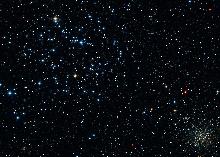
M35 and NGC 2158
This wonderful image was taken by Fritz Benedict and David Chappell using a 30" telescope at McDonal Observatory. Randy Whited combined the three colour CCD images to make the picture
To the lower right of the constellation lies the Planetary Nebula NGC2392. As the Hubble Space Telescope image shows, it resembles a head surrounded by the fur collar of a parka hood - hence its other name The Eskimo Nebula. The white dwarf remnant is seen at the centre of the "head". The Nebula was discovered by William Herschel in 1787. It lies about 5000 light years away from us.
The constellation Leo
The constellation Leo is now in the south-eastern sky in the evening. One of the few constellations that genuinely resembles its name, it looks likes one of the Lions in Trafalger Square, with its main and head forming an arc (called the Sickle) to the upper right, with Regulus in the position of its right knee. Regulus is a blue-white star, five times bigger than the sun at a distance of 90 light years. It shines at magnitude 1.4. Algieba, which forms the base of the neck, is the second brightest star in Leo at magnitude 1.9. With a telescope it resolves into one of the most magnificent double stars in the sky - a pair of golden yellow stars! They orbit their common centre of gravity every 600 years. This lovely pair of orange giants are 170 light years away.Leo also hosts two pairs of Messier galaxies which lie beneath its belly. The first pair lie about 9 degrees to the west of Regulus and comprise M95 (to the east) and M96. They are almost exactly at the same declination as Regulus so, using an equatorial mount, centre on Regulus, lock the declination axis and sweep towards the west 9 degrees. They are both close to 9th magnitude and may bee seen together with a telescope at low power or individually at higher powers. M65 is a type Sa spiral lying at a distance of 35 millin klight years and M66, considerably bigger than M65, is of type Sb. Type Sa spirals have large nuclei and very tightly wound spiral arms whilst as one moves through type Sb to Sc, the nucleus becomes smaller and the arms more open.
The second pair of galaxies, M95 and M96, lie a further 7 degrees to the west between the stars Upsilon and Iota Leonis. M95 is a barred spiral of type SBb. It lies at a distance of 38 million light years and is magnitude 9.7. M96, a type Sa galaxy, is slightly further away at 41 million light years, but a little brighter with a magnitude of 9.2. Both are members of the Leo I group of galaxies and are visible together with a telescope at low power.
There is a further ~9th magnitude galaxy in Leo which, surprisingly, is in neither the Messier or Caldwell catalogues. It lies a little below lambda Leonis and was discovered by William Herschel. No 2903 in the New General Catalogue, it is a beautiful type Sb galaxy which is seen at somewhat of an oblique angle. It lies at a distance of 20.5 million light years.
The constellation Virgo
Virgo, rising in the east in late evening this month, is not one of the most prominent constellations, containing only one bright star, Spica, but is one of the largest and is very rewarding for those with "rich field" telescopes capable of seeing the many galaxies that lie within its boundaries. Spica is, in fact, an exceedingly close double star with the two B type stars orbiting each other every 4 days. Their total luminosity is 2000 times that of our Sun. In the upper right hand quadrant of Virgo lies the centre of the Virgo Cluster of galaxies. There are 13 galaxies in the Messier catalogue in this region, all of which can be seen with a small telescope. The brightest is the giant elliptical galaxy, M87, with a jet extending from its centre where there is almost certainly a massive black hole into which dust and gas are falling. This releases great amounts of energy which powers particles to reach speeds close to the speed of light forming the jet we see. M87 is also called VIRGO A as it is a very strong radio source.Below Porrima and to the right of Spica lies M104, an 8th magnitude spiral galaxy about 30 million light years away from us. Its spiral arms are edge on to us so in a small telescope it appears as an elliptical galaxy. It is also known as the Sombrero Galaxy as it looks like a wide brimmed hat in long exposure photographs.
The constellation Ursa Major
The stars of the Plough, shown linked by the thicker lines in the chart above, form one of the most recognised star patterns in the sky. Also called the Big Dipper, after the soup ladles used by farmer's wives in America to serve soup to the farm workers at lunchtime, it forms part of the Great Bear constellation - not quite so easy to make out! The stars Merak and Dubhe form the pointers which will lead you to the Pole Star, and hence find North. The stars Alcor and Mizar form a naked eye double which repays observation in a small telescope as Mizar is then shown to be an easily resolved double star. A fainter reddish star forms a triangle with Alcor and Mizar.Ursa Major contains many interesting "deep sky" objects. The brightest, listed in Messier's Catalogue, are shown on the chart, but there are many fainter galaxies in the region too. In the upper right of the constellation are a pair of interacting galaxies M81 and M82 shown in the image below. M82 is undergoing a major burst of star formation and hence called a "starburst galaxy". They can be seen together using a low power eyepiece on a small telescope.
Another, and very beautiful, galaxy is M101 which looks rather like a pinwheel firework, hence its other name the Pinwheel Galaxy. It was discovered in1781 and was a late entry to Messier's calalogue of nebulous objects. It is a type Sc spiral galaxy seen face on which is at a distance of about 24 million light years. Type Sc galaxies have a relativly small nucleus and open spiral arms. With an overall diameter of 170,000 light it is one of the largest spirals known (the Milky Way has a diameter of ~ 130,000 light years).
Though just outside the constellation boundary, M51 lies close to Alkaid, the leftmost star of the Plough. Also called the Whirlpool Galaxy it is being deformed by the passage of the smaller galaxy on the left. This is now gravitationally captured by M51 and the two will eventually merge. M51 lies at a distance of about 37 million light years and was the first galaxy in which spiral arms were seen. It was discovered by Charles Messier in 1773 and the spiral structure was observed by Lord Rosse in 1845 using the 72" reflector at Birr Castle in Ireland - for many years the largest telescope in the world.
Lying close to Merak is the planetary nebula M97 which is usually called the Owl Nebula due to its resemblance to an owl's face with two large eyes. It was first called this by Lord Rosse who drew it in 1848 - as shown in the image below right. Planetary nebulae ar the remnants of stars similar in size to our Sun. When all possible nuclear fusion processes are complete, the central core collpses down into a "white dwarf" star and the the outer parts of the star are blown off to form the surrounding nebula.

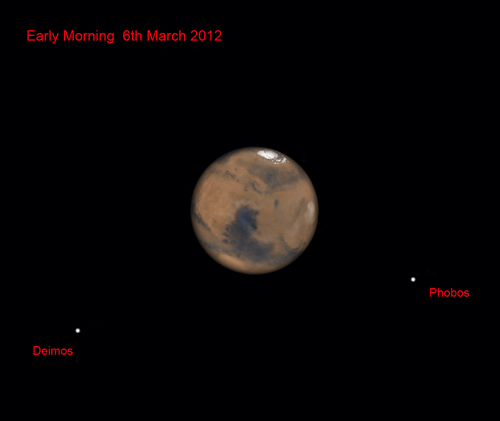
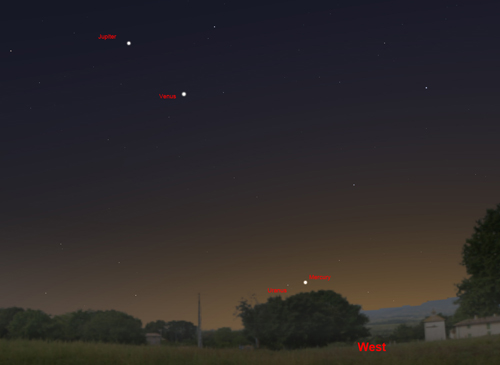
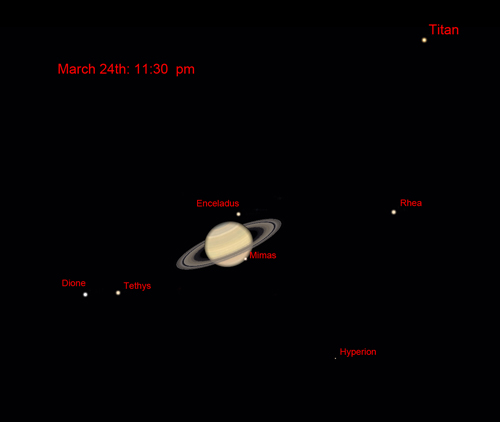
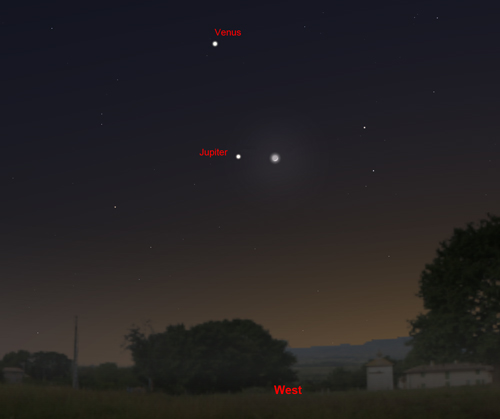
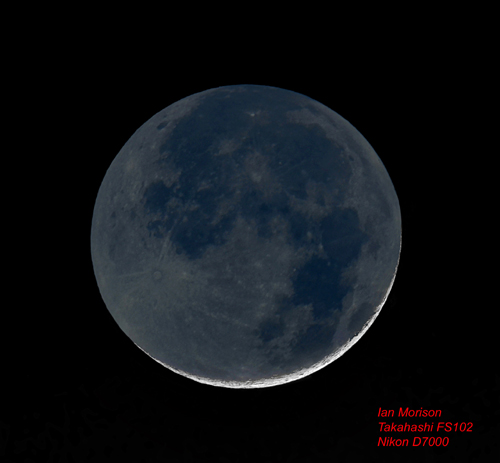
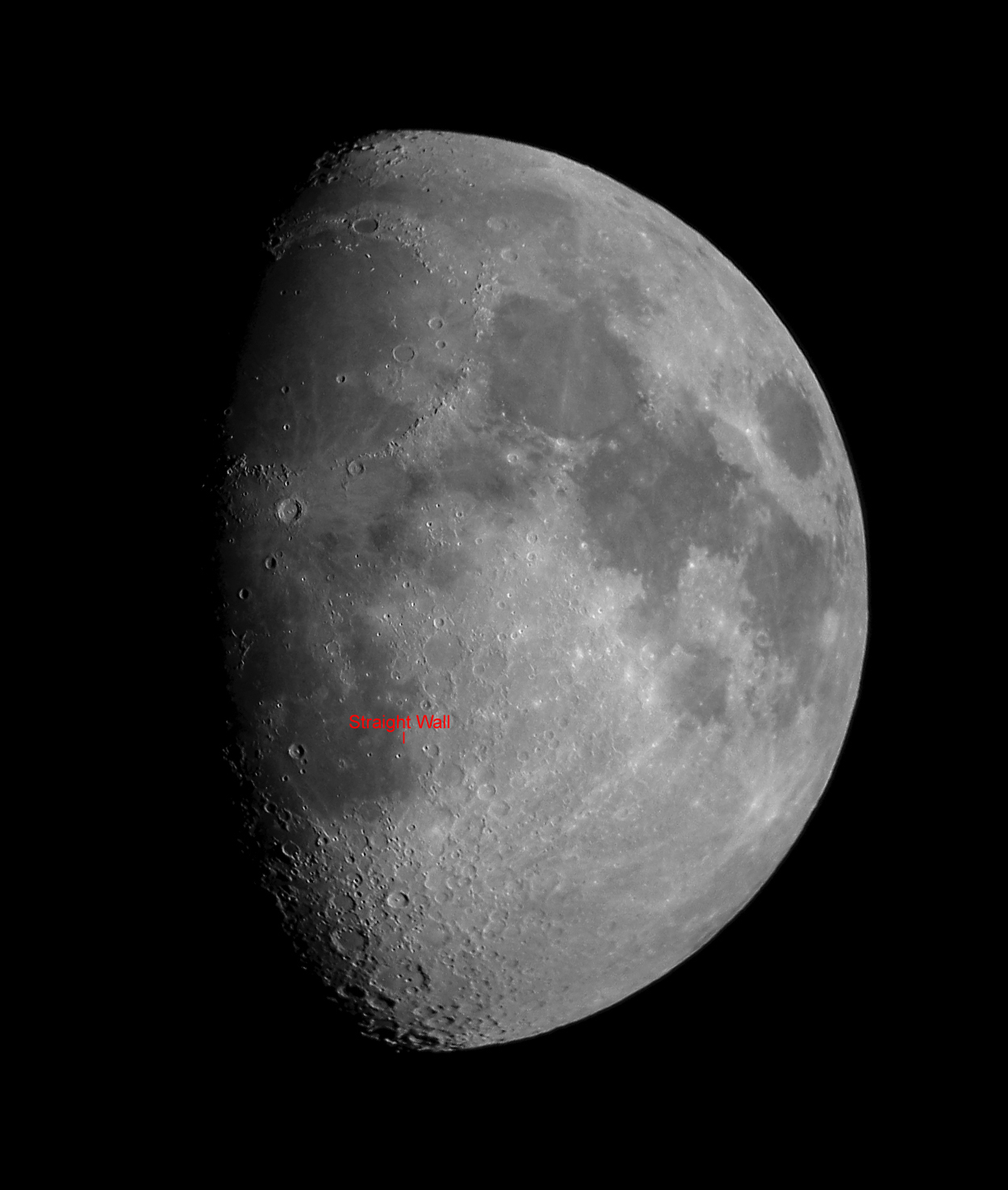
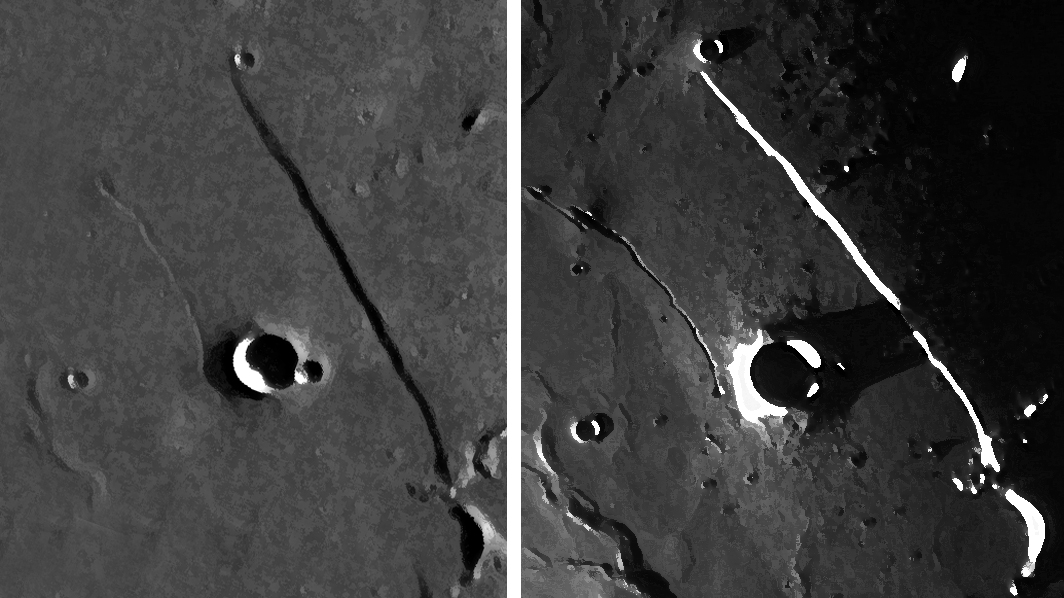
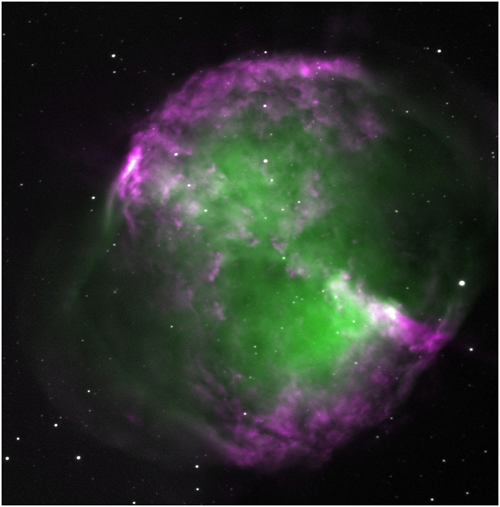









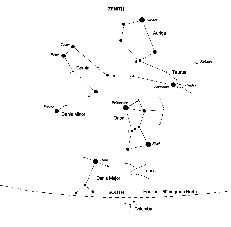


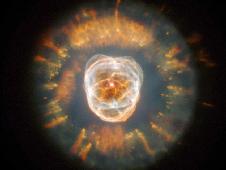
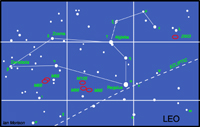
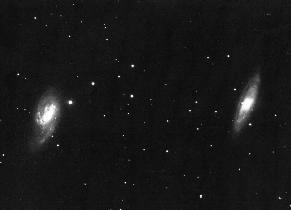
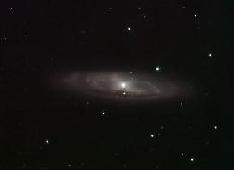
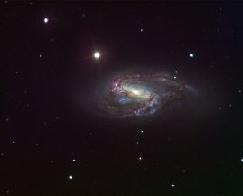
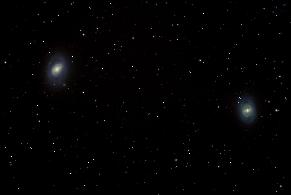
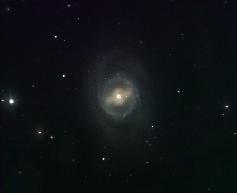
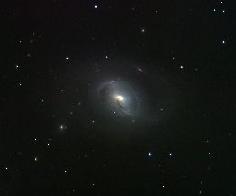
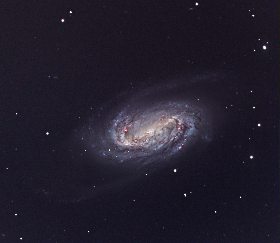










No comments:
Post a Comment